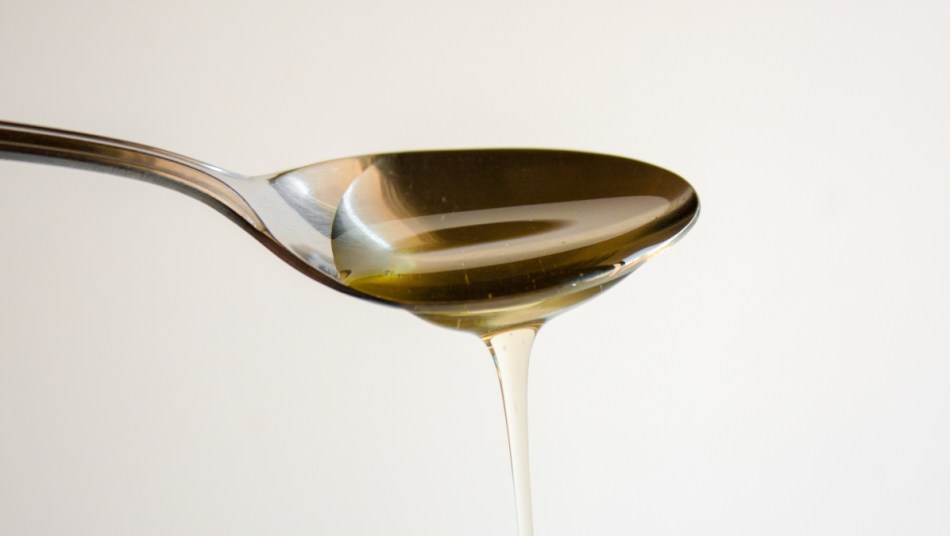This Popular Sweetener May Cause Insulin Resistance and Fatty Liver Disease

Whether you use it to sweeten your iced tea, brighten a cocktail, or top your French toast, agave nectar adds a yummy flavor to any treat. The sweetener dissolves quickly which makes it the perfect choice for a sugary drink. If you’re diabetic, you may use it because it has a low glycemic index. Despite this, agave nectar may cause serious health issues over the long term.
“Generally speaking, sweeteners with a higher glycemic index cause higher blood sugar spikes,” says Alexandra Caspero, a plant-based dietician and recipe developer for Delish Knowledge. “So agave syrup being lower on the glycemic index is considered to be healthier for diabetes. However, glycemic response is only one way to consider the health effects of a food.”
The Long-Term Dangers of Fructose in Agave Nectar
In the short term, agave nectar doesn’t raise blood glucose. “This is because agave syrup is higher in the sugar fructose than glucose. [Fructose] does not raise blood sugar or insulin levels the same way that glucose does,” says Caspero.
Why doesn’t fructose cause a blood sugar spike? An analysis published in The American Journal of Clinical Nutrition explained that most cells in the body can absorb glucose but not fructose. As a result, the liver does the brunt of the work metabolizing this complex sugar. Another study from The American Journal of Clinical Nutrition noted that fructose doesn’t stimulate insulin like glucose does. So, on the surface, fructose seems to be a friendlier sugar for diabetics.
However, a high intake of fructose can cause or contribute to metabolic syndrome over the long term. Metabolic syndrome refers to several metabolic conditions that raise the risk of heart disease. Risk factors for the syndrome include high triglycerides, low levels of “good” HDL cholesterol, high blood pressure, and high blood glucose.
The Link Between Fructose and Fatty Liver Disease
A high intake of fructose can also cause serious liver problems. “Excess fructose is converted into fat by your liver. This can raise triglyceride levels and may promote non-alcoholic fatty liver disease,” says Caspero. “There are also studies showing that diets high in fructose consumption are associated with higher levels of LDL cholesterol and increased belly fat. For comparison, regular table sugar is about 50 percent glucose and 50 percent fructose. Agave syrup is [about] 85 percent fructose.”
Indeed, a study from the American Diabetes Association found that a high-fructose diet causes elevated triglycerides and insulin resistance. Another study published in the Journal of Hepatology showed that high-fructose foods increase the risk of non-alcoholic fatty liver disease (NAFLD). The National Institutes of Health notes that NAFLD leads to liver inflammation and damage. This causes an even more severe disease known as non-alcoholic steatohepatitis (NASH). NASH can eventually cause scarring of the liver, liver cancer, and liver failure.
It’s important to note that these studies measured fructose from refined food and drinks — such as soda and processed sweets — not agave syrup. Still, agave syrup shouldn’t get a pass because it comes from a healthy plant. The sweetener loses a lot of its nutritional benefits in the production process. Thus, high amounts of agave nectar could cause similar issues because the sweetener is so high in fructose.
What sugary foods can you eat with diabetes?
Don’t let the news on fructose scare you away from fresh fruit! While refined versions of this sugar causes metabolic issues, fruit fructose does not.
“Some critics say that because fruit also contains fructose, it should be reduced for this reason,” says Caspero. “But the fructose from whole fruit is not metabolized the same way. Whole fruit contains fiber and smaller amounts of fructose that are found in concentrated sweeteners, like agave syrup.”
Fresh fruit contains soluble fiber, which draws water into the gut and slows down digestion. This stabilizes blood sugar levels and keeps you satiated. Fruits that contain large amounts of soluble fiber include apples, pears, and raspberries.
These three fruits also have a low glycemic index and a low glycemic load. (As noted by Harvard Health, the glycemic index measures how quickly a food raises your blood sugar. Glycemic load accounts for serving size and the number of carbs in a food to predict how quickly it raises blood sugar levels.)
Do you have to give up sweeteners entirely?
According to Caspero, you don’t have to give up all sugar. “Diabetics don’t have to refrain from all added sweeteners. But they should be mindful of the amount and source,” she says. “Opting for naturally sweetened options from whole foods, like fruit or dried fruit is a better option.”
Ultimately, the real goal is to reduce your overall sugar intake. “Slowly reducing [sugar] intake does change taste and flavor preferences,” says Caspero. “So, food that perhaps didn’t taste as sweet at first, like whole fruit, will taste sweeter as consumption of more concentrated sweet foods like cookies, cake, and candy decrease. Bottom line: The less concentrated sweet foods that you consume, the sweeter fruit becomes. That’s not to say you can’t enjoy dessert, even with agave syrup! But to be mindful of overall nutrition and focusing on other, more healthful foods in the diet.”












